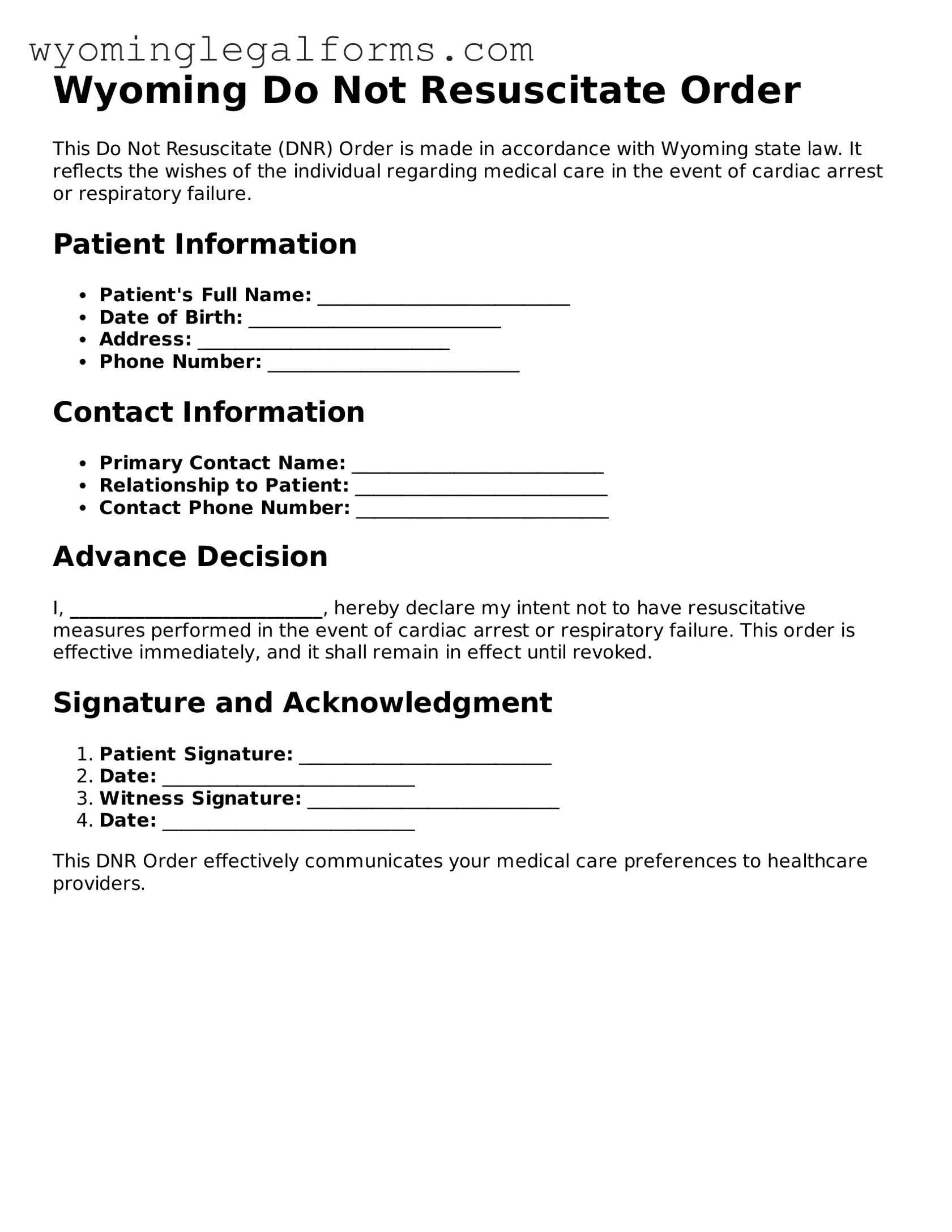What is a Do Not Resuscitate (DNR) Order in Wyoming?
A Do Not Resuscitate Order is a legal document that informs medical personnel not to perform cardiopulmonary resuscitation (CPR) or other life-saving measures if a patient’s heart stops or if they stop breathing. This order is meant for individuals who wish to avoid aggressive medical interventions in certain situations, allowing for a more peaceful end-of-life experience.
Who can request a DNR Order in Wyoming?
In Wyoming, a DNR Order can be requested by the patient themselves if they are of sound mind. If the patient is unable to make decisions, a legally authorized representative, such as a family member or legal guardian, may request the order on their behalf.
How do I obtain a DNR Order in Wyoming?
You can obtain a DNR Order by speaking with your healthcare provider. They can provide you with the necessary forms and help you understand the implications of signing a DNR Order. It is important to have a conversation about your wishes and ensure that everyone involved understands your decisions.
Is a DNR Order valid in all healthcare settings?
Yes, a properly completed DNR Order is valid in all healthcare settings in Wyoming, including hospitals, nursing homes, and at home. However, it is essential to ensure that the order is accessible and clearly visible to medical personnel in case of an emergency.
Can I change or revoke my DNR Order?
Yes, you can change or revoke your DNR Order at any time. To do this, simply inform your healthcare provider and complete a new order if necessary. It is important to communicate any changes to your family and healthcare team to avoid confusion during emergencies.
Will my DNR Order be honored if I travel out of state?
While a DNR Order is a legal document in Wyoming, laws regarding DNRs can vary by state. If you plan to travel, it is wise to check the laws of the state you are visiting. Carrying a copy of your DNR Order and any relevant documentation can help ensure your wishes are respected.
What should I discuss with my family about my DNR Order?
It is crucial to have open discussions with your family about your DNR Order. Talk about your wishes, the reasons behind your decision, and what you want for your end-of-life care. This can help alleviate confusion and ensure that your family members support your choices during difficult times.
